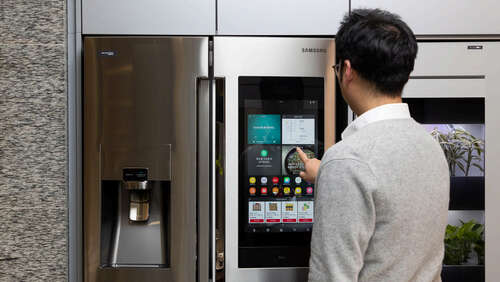
Before you start researching a certain fridge model, there are a few red flags you can spot right on the product page that indicate higher energy use. The first is “through the door” dispensers. While ice and cold water dispensers on the front of a fridge door were all the rage a decade or so ago, you’ll notice that a lot of the newest models no longer have them. This is because, while convenient, this feature increases energy use by quite a significant amount. According to Energy Star, they typically increase energy use by 14-20%.
Another thing to look out for is Energy Star certification. You’ll see these as blue and white stickers on the fridge itself and the model’s product page. On average, Energy Star-certified refrigerators are about 9% more energy efficient than the federal standard. However, just about any fridge can earn Energy Star certification, even if it’s not a smart fridge, so it’s not a great indication of whether the smart model will save you money or not. Instead, what you need to look for is the Star Energy Most Efficient sticker. These models offer the latest in energy efficiency and other technological innovations and are basically Energy Star’s top recommendations.
One last thing to check is the type of refrigerant. The two lowest GWP (Global Warming Potential) refrigerants are R-600a and R-441A, so try to choose a model that uses one of these.

